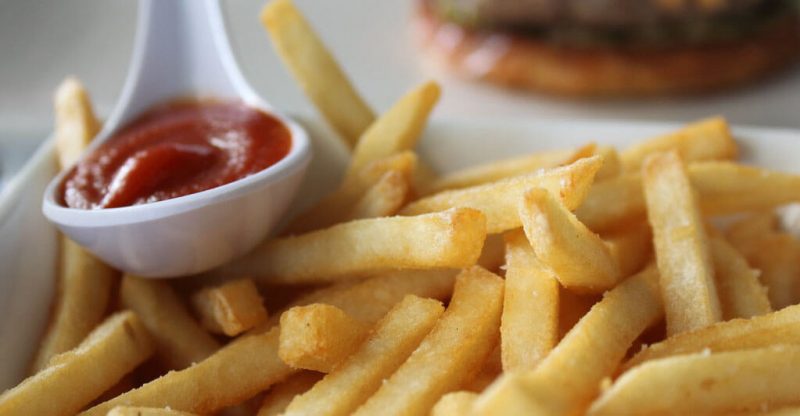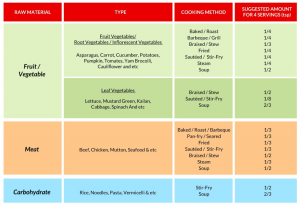What is Monosodium Glutamate (MSG E621) in food: Is it Bad for you?

What Is MSG? | Uses | Safety | Side Effects | FAQs
MSG, the abbreviation of monosodium glutamate, comes from the neutralized of amino acid, glutamic acid. It is a common food additive used as a seasoning or a flavor enhancer in food with the E number E621. MSG is a controversial ingredient for years and its health concern maybe still continue.
There are thousands of articles online about this additive, in this article, we’ll take a quick look at what MSG is and provide you with several authority resources that’ll give you a broader understanding of it.
What is MSG?
Definition
It is the monosodium salt of glutamic acid, one of the most abundant amino acids in nature. The bulk sold in the market is commonly the monohydrate form, with chemical formula C5H8NaNO4 · H2O.
What is MSG made of?
We can see from its chemical formula C5H8NaNO4.H2O, it is made of monosodium glutamate and water.
What is MSG used for in food?
It is an Umami substance that intensifies the meaty, savory flavor of food and makes them much tastier.
It is commonly used in Chinese food, canned vegetables, fine bakery wares, soups and broths, sauces, meat and meat products, seasoning and condiments and food supplements.
How is MSG made?
It is produced through a natural process – fermentation, then followed by neutralization and crystallization process.
Here are 4 authority resources mentioned the manufacturing process, respectively from Wikipedia, EFSA, a China big manufacturer and Ajinomoto.
Let’s see one by one.
1. Wikipedia
Generally, MSG is now industrially produced by the fermentation of starch and sugar, such as corn starch and tapioca starch instead of extracting and crystallizing from seaweed by a Japanese scientist in 1908 when it was first made. (1)
2. EFSA
There are two bacterial approved for the fermentation of L-glutamic acid, one is corynebacterium glutamicum from strain 2256; another is a new one, from the genetically modified strain of C. glutamicum (i.e. strain EA-12).
In both processes, glutamic acid is produced by fed-batch fermentation using carbon sources of vegetal origin (sucrose), nitrogen sources, salts and vitamins. (2)
3. A China Big Manufacturer
Starting from the fermentation of glucose, using corynebacterium glutamicum to produce glutamic acid then neutralize with sodium carbonate. The subsequent steps are decolorization, filtration, crystallization, centrifuge, drying and so on.
4. Ajinomoto
Ajinomoto said their brand MSG AJI-NO-MOTO® produced in Brazil is through the fermentation of sugarcane molasses and here with the detailed flow chart. (3)

Specification
Structure

Image Source
| Other names |
|
| Appearance | A white, practically odorless crystalline granular or powder. |
| CAS number | 6106-04-03 (monohydrate) |
| Chemical formula | C5H8NaNO4.H2O |
| Molecular weight | 187.13 |
| Melting Point | 232 °C (450 °F; 505 K) |
| Solubility |
|
| Stability | Stable in high temperatures and in the presence of light. Around 0.6% of MSG will decompose when heated its 10% solution in 100ºC for 3 hours in PH 6.9. It will lose the combined crystallization water when heated to 120ºC. |
What are the Uses of MSG?
It has been used all over the world as a flavour enhancer & umami seasoning in home and restaurants for around a hundred years. It has an umami taste and when added to foods, it enhances and enriches their savory (umami) and rich flavors.
What are common foods using MSG?
The following are the common foods with MSG and the recommended added level, by the manufacturer, Ajinomoto.
| Application | Uses Level |
| Meat products | ≥ 0.3% |
| Broths | 15 – 25% |
| Soups | 6 – 8% |
| Seasonings: up to 10% salt | 50 – 70% |
| Seasonings: high salt content | 8 – 10% |
| Seasonings: for instant noodles (Lamen) | 10 – 17% |
| Snacks | 0.6 – 0.75% |
| Tomato sauce | 0.6 – 1.0% |
| Mustard | 0.6 – 1.0% |
| Salad dressings | 0.4 – 0.6% |
| Vegetable preserves | 0.2 – 0.3% |
| Fish byproducts | ≥ 0.3% |
| Frozen food | |
| Biscuits | |
| Pasta / dough |
Why people worry about Chinese food?
Chinese restaurant syndrome
People usually associate MSG with Chinese food, and some people may have symptoms like chest pain, headache, skin flushing, and sweating after eating in a Chinese restaurant.
Such experience is called “Chinese Restaurant Syndrome” which may be caused by MSG and first reported in 1968. (4)
And due to this issue, some people order Chinese food without adding MSG, some even ask “if every China restaurant uses MSG?”
Is only Chinese food with MSG?
However, MSG isn’t only used in Chinese food. It is also commonly used in other Asia countries, like Japan, where MSG is first found; also in India, Pakistan, Indonesia, Thailand, Malaysia and etc. You can easily find it as a flavour enhancer in the label of many processed foods with its name or E621/621 in the supermarket.
Although the safety has been approved by the FDA, as we all know that a flavor enhancer will trick our taste buds and send false signals to our brain, that’s making us difficult to distinguish whether the dish is really good or not and someone is even addictive with it.
So If you’re worried about MSG in food, please go to a standard restaurant for eating.
Is MSG Safe to eat?
Yes, the safety has been approved by the FDA (U.S. Food and Drug Administration) and EFSA (European Food Safety Authority) as a food additive.
FDA
FDA considers the addition of MSG to foods to be “generally recognized as safe” (GRAS). It is the sodium salt of glutamic acid and FDA classified it in the list of “Special Dietary and Nutritional Additives” with amino acids and claimed it is a direct food additive and may be safely used as nutrients added to foods. (5)
EFSA
Monosodium glutamate (E 621) is authorised as a food additive in the European Union (EU) in accordance with Annex II to Regulation (EC) No 1333/2008 on food additives and categorized as “additives other than colours and sweeteners” (6)
Re-evaluation In 2017
Safety
No adverse effects were observed in the studies of genotoxicity, carcinogenicity, neurotoxicity, reproductive and developmental toxicity.
ADI
In June, 2017, EFSA derived a group acceptable daily intake (ADI) of 30 mg/kg bw per day, expressed as glutamic acid.
Side Effects
EFSA also indicated the ADI that related with the MSG symptom complex (> 42.9 mg/kg), headache (85.8 mg/kg), blood pressure increase (150 mg/kg) and also insulin increase (> 143 mg/kg).(7)
Call for Technical Data
EFSA is now call for technical data for re-evaluate MSG and other glutamates from April, 2019.
Including:
- Uses level
- Function and technological need
- Natural levels of free glutamic acid-glutamate in foods
- Food ingredients rich in free glutamic acid & glutamate
- Lowest achievable limits for the impurities of toxic elements
Approved Uses
Its approved applications are listed in Group I in 67 food categories with the maximum level “10 g/kg, individually or in combination, expressed as glutamic acid.”
Following foods may contain it (8):
- Dairy products and analogues
- Fats and oils and fat and oil emulsions
- Edible ices
- Fruit and vegetables
- Confectionery
- Cereals and cereal products
- Bakery wares
- Meat
- Fish and fisheries products
- Eggs and egg products
- Sugars, syrups, honey and table-top sweeteners
- Salts, spices, soups, sauces, salads and protein products
- Foods intended for particular nutritional uses as defined by Directive 2009/39/EC
- Beverages
UK Food Standards Agency
Categorized in others. (9)
Food Standards Australia New Zealand
It is approved ingredient in Australia and New Zealand with the code number 621. (10)
JECFA
Functional class: Food additives: flavor enhancer (11)
ADI: There is no limitation for the use of MSG as a food additive and the Acceptable Daily Intake set “not specified” since 1987. (12)
What are the possible side effects?
Monosodium Glutamate (MSG) is a well-known and controversial ingredients. It is common that consumers have questions whether MSG is bad for our health and what are the side effects. Although the FDA and EFSA have approved its safety for years, it often receive public safety attention.
- Why is MSG controversial?
- Metabolism
- Allergy: headache, nausea,numbness, flushing and so on
- Effects on brain
- Does it cause cancer?
- Is it toxic?
- Does it raise blood pressure?
- Does it lead to obesity?
- Does it cause asthma?
- Does it damage liver?
- May damage kidney
- May cause type 2 diabetes
Why is MSG controversial?
Its use remains controversial for some people as there are a lot of health concerns for the people who are intolerant with it. The common risks are headache, brain damage, neurotoxin, blood pressure, Chinese Restaurant Syndrome and so on.
Some consumers try to avoid it and turn to its replacement as they believe that MSG is bad for the health. We understand that consumers care about the ingredients in the foods we eat.
Let’s start first from the metabolism, then drive to its possible side effects.
What’s the metabolism in our body?
Absorption
MSG is absorbed in the intestine and metabolized to a great extent in the gut wall in our body.
Metabolism
MSG can be metabolized by the liver, brain and muscle as reported by EFSA.
- In the liver, it leads to glucose, lactate glutamine and other amino acids.
- In muscle tissues, it is converted to alanine and glutamine.
- In the brain, it metabolized via transamination to aspartate.
What are the allergy?
As FDA says, some people are sensitive with MSG. Allergic symptoms may as follows:
- Headache (13)
- Atopic dermatitis (14)
- Nausea,numbness, flushing, tingling, palpitations, and drowsiness may occur in some sensitive individuals who consume 3 grams or more of MSG without food. (15)
What are the effects on Brain?
It has been reckoned as an excitotoxin as it can damage the brain. (16)
But a study published by The University of Pittsburgh School of Medicine in 2018, found that MSG does not raise brain glutamate concentrations. (17)
Does it cause cancer?
There’s no reported link between MSG and cancer.
Is MSG toxic?
Genotoxin
A study published in Food Chem Toxicology in 2016 showed that MSG could cause DNA damage in isolated human lymphocytes after 1-h in vitro exposure and it is genotoxic to human peripheral blood lymphocytes in vitro. (18)
Neurotoxin
A research published in 2018 showed that no evidence in the study that dietary MSG causes neurotoxic. (19)
Does it raise blood pressure?
A finding reported in 2011 by Jiangsu Provincial Centre for Disease Control and Prevention, showed that MSG intake was associated with a significant increase in systolic blood pressure and diastolic blood pressure, especially among women. (20)
Also, another study published in 2015 by The University of British Columbia, finding that repetitive oral administration of monosodium glutamate causes high blood pressure, and along with nausea and headache. (21)
Does it lead to obesity?
A study published in The American Journal of Clinical Nutrition in 2011 found that MSG consumption was closely related with overweight development among healthy Chinese adults. (22)
However, a study conducted more than 5 years on 1282 Chinese men and women showed that MSG was not associated with obesity by Jiangsu Provincial Centre for Disease Control and Prevention. (23)
Similarity, another study published in Nutrition & Metabolism in 2012 showed that higher intake of MSG is linked to the risk of having the metabolic syndrome and being overweight in Thailand people. (24)
Nevertheless, a study published in Public Health Nutrition had the opposite result in Vietnamese adults. (25)
Does it cause asthma?
An early study in 1987 from a hospital in Australia found that 13 of 32 patients (with asthma) developed asthma with increasing doses of MSG from 0.5 gm to 5.0 gm within 12 hours. (26)
However, a study published in 2012, using MSG dosages from 1 g, 5 g and 25 mg/kg in 24 adults, concluded that there was no evidence to support the avoidance of MSG in adults with chronic asthma, but the author also said the data were limited. (27)
Does it damage liver?
In a 2011 study on rats showed that MSG changed dilatation of the central vein and do bad to the liver. (28)
May damage kidney
A study published in in 2015 found that MSG may be harmful to the kidney. (29)
May cause type 2 diabetes
MSG caused type 2 diabetes in animals in a 2019 study. (30)
Is it safe for pregnant and breastfeeding?
Generally, it is safe, but better consult with your doctor.
A study on rats, published in 2018, said that “MSG suppresses the female reproductive function probably by impairing the functions of ovary and uterus.”(31)
15 Frequently Asked Questions
- Is it natural?
- Is it vegan?
- Is it gluten free?
- What is the taste?
- Which foods high with it?
- What are the benefits?
- How to cook with MSG?
- What are the substitutes?
- Does Mcdonalds have MSG?
- How to avoid MSG?
Is it Natural?
Yes, it is naturally present in many foods, sources such as tomatoes and cheeses.
Ajinomoto also said that glutamate is naturally found in meat, fish, milk and many vegetables. (32)
Per FDA’s information, certain ingredients such as hydrolyzed vegetable protein, autolyzed yeast, hydrolyzed yeast, yeast extract, soy extracts, and protein isolate, etc. also contain MSG naturally.
Is it Vegan?
Yes, it is vegan as the raw material glutamic acid is origin from fermentation and the manufacturing process without the use of animal matter or products derived from animal origin. As a food ingredient, it is considered vegan and vegetarians can eat it in their diet.
Is it Halal?
Yes, it is halal and complies with Muslims living habits and needs. We can find several China manufacturers certificated with MUI halal.
Is it Kosher?
Yes, it is kosher pareve. E621 has met all the “kashruth” requirements and can be certified as kosher.
Is it Gluten free?
What’s the relationship between glutamate and gluten is an often asked question. But actually there is no correlation between them.
Yes, it is gluten free or without gluten as comply with the following conditions listed by FDA, from the raw materials and the manufacturing process do not contain wheat, rye, barley, or crossbreeds of these grains. (33)
What is the taste of MSG?
The taste is different from four existed tastes (sweet, sour, bitter and salty) and called umami, the fifth taste, meaning meaty or savoury in English terms and “Xianwei” in Chinese term.
Which foods high in MSG?
Cheeses, ripened tomatoes, dried mushrooms, fermented fish sauce and fermented soy sauce containing high levels of free glutamate. (34)
Yeast extract, soy sauce and protein hydrolysates may also rich in free glutamic acid & glutamate.
What are the benefits of MSG in Food?
1. Taste enhancement
MSG enhances the flavor and mouthfeel characteristics which make the food taste better with a little added before, during or after cooking.
2. Helps low salt diets
Salt (Sodium chloride) is a desirable material in food as it contributes the salt taste, but the amount of salt added to food should be controlled in our diet because excessive sodium intake is associated with increased risk of hypertension, stroke and cardiovascular diseases.
MSG contains about 12% of sodium while the table salt NaCl contains about 39%. MSG imparts “umami” taste as well as a salty taste to food.
Therefore the sodium content of processed foods can be reduced by using MSG combining with salt to replace some of the salt.
What is Glutamate?
Salts of glutamic acid, including MSG, as well as the ionic form of glutamic acid, are known as glutamate.
It is the free form of glutamate that could provide the “umami” taste to food and has a flavour enhancing effect instead of the bound form which combines with other amino acids as a part of proteins.
Other glutamates such as monopotassium glutamate (E622), calcium glutamate (E623), monoammonium glutamate (E624) and magnesium glutamate (E625) can also be used as flavor enhancers in foods.
What does glutamate do?
Glutamate is a neurotransmitter in the healthy brain. It has excitatory effects on nerve cells, and that it can excite cells to their death in a process now referred to as “excitotoxicity” glutamate is the major excitatory neurotransmitter in the mammalian central nervous system. (35)
How to cook with MSG?
It is heat stable and suitable to use before, during and after cooking process:

MSG amount to be added in different cook applications, the method and the suggested amount are as follows (36):

What’s the MSG substitute?
Replacement such as I+G (made of disodium guanylate and disodium inosinate) and hydrolyzed vegetable protein.
Is yeast extract the same as MSG?
They’re different, yeast extract is another flavor enhancer, it may contain MSG.
Does Mcdonalds have MSG in their food?
Mcdonalds‘ response: “Monosodium glutamate (MSG) is a flavor enhancer that is widely used in the food industry and can be found in many food items you’d buy from your local grocery. The use of MSG is authorized by food safety authorities and traces of it are found as a sub-ingredient in few of our products, such as McChicken, Spicy McChicken, Grand Chicken Spicy and McArabia Chicken.”
But in an earlier reply from McDonald’s Canada in 2012, it said that MSG is not used to any of its products because it may cause reactions in individuals who are sensitive to MSG due to its glutamate content. Other flavor enhancers are used such as hydrolyzed plant protein and hydrolyzed vegetable protein.
How to avoid MSG in food?
An article from Washington Post in 2018 said that around 40% Americans tried to avoid MSG though it has been approved for decades.
So let’s move to the topic, how to avoid it? Choosing msg free foods is known to all.
Following are 4 steps:
Step 1: Choosing food raw materials without MSG
For this step, I think it is hard although we know several food raw materials contain MSG, like mentioned in this article but there may still exist many foods that we don’t know whether they contain MSG.
Step 2: Choose seasonings without MSG
I think this step would be easier to do as you can ask the staff in the restaurant or see in the label of seasonings.
Step 3: Read the food label
Usually, MSG is required to list out its specific name (i.e. monosodium glutamate) or E number or code number (i.e. 621 or E621) together with its functional class (flavour enhancer) in the ingredient list on the food label.
The FDA requires added MSG to be listed on the food label, so you can easily identify it.
Step 4: Take care
Many products and restaurants claim “no added MSG” means that they don’t add MSG in the food process but please remember that there may be naturally occurring glutamates in the food.
Conclusion
Now you may have a good knowledge of the food additive – monosodium glutamate E621, from its production; uses; approved safety, possible side effects and some FAQs such as is it vegan, gluten free, synthetic or natural.
What kinds of food packaging have you found this ingredient in? Let me know in the comments.



Its hard to find knowledgeable people on this topic, but you sound like you know what youre talking about! Thanks
Natural Flavors in the ingredients = MSG
Thanks for your fine work James Han!
Do you know how the FDA defines an ingredient as “safe”?
I found MSG in “JUNK FOOD”. Flavored Potato chip, pretzels,sauces, dressings ect. I ALSO REMEMBER READING LONG AGO THAT “MSG” A FLAVOR ENHANCER IS ADDED TO CHINESE FOOD SO THAT YOU WILL CONSUME MORE FOOD. MAKES PEOPLE EAT AND EAT MORE! That’s why it’s used in junk food too! It makes you eat more food and gain weight more easily! I try to avoid MSG if possible!!
Thanks for your insight!